|
An American Family Trilogy:
|
|
|
The following films by Alan and Susan Raymond are available from our Online Store. Click the film's photo or title to open the product/purchase page in a new window.
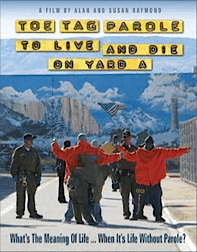 | TOE TAG PAROLE: TO LIVE AND DIE ON YARD A
(2015, 80 min.) explores the nation’s extreme sentencing policy of Life Without the Possibility of Parole, the other death penalty. Filmed entirely at the maximum-security California State Prison, Los Angeles County, the documentary focuses on an experimental yard for men serving life that is free of violence, racial tensions and illegal drug use. The film advances issues of rehabilitation for those who have committed capital crimes and questions whether the sentence of Life Without the Possibility of Parole violates human rights.
|
|
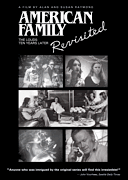 | AN AMERICAN FAMILY REVISITED
(1983, 60 min.) is a ten-year update on the Loud family and their reflections on becoming the first reality TV stars. With their unique experience of becoming media celebrities, coupled with the effects of a family's divorce, their lives had been changed in many ways. The filmmakers wanted to explore a first-hand report from each family member on how they were affected by these two dramatic life experiences.
|
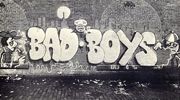 | BAD BOYS
(1978, 120 min.) is an experimental video documentary that uncompromisingly delves into the complex problems of juvenile crime in America. It is an inside look at the way society treats its troublesome and violent youth as documented in three public institutions: Bryant High School in Long Island City, Spofford Juvenile Center, New York City, Brookwood Center in Claverack, NY
|
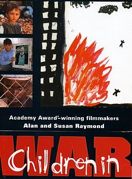 | CHILDREN IN WAR
(2000, 108 min.) is a powerful, compassionate and disturbing report on the effects of war and terrorism on children caught in the midst of armed conflict. Filmed on location in Bosnia, Rwanda, Palestine, Israel and Northern Ireland, this feature-length documentary explores war-torn neighborhoods, orphanages, schools and refugee camps. Through the eyes of children, the tragedy of war is witnessed.
|
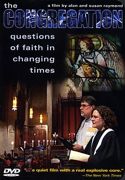 | THE CONGREGATION
(2004, 120 min.) profiles a progressive United Methodist church in the midst of profound change. Conflict arises over dissatisfaction with the newly appointed senior pastor. Meanwhile the congregation supports the lesbian associate pastor as she fights to keep her credentials as a minister. The Congregation offers a complex portrait of a church moving into the 21st century.
|
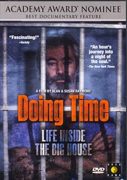 | DOING TIME: Life Inside The Big House
(1990, 60 min.) was filmed inside Lewisburg Federal Penitentiary, home to Mafia bosses, Columbian drug lords, murderers and hit men. The film explores the psychological effect of long-term incarceration on inmates where rehabilitation and parole have all but been abandoned.
|
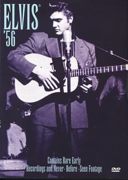 | ELVIS '56
(1987, 61 min.) takes you back to 1956, Elvis Presley’s breakthrough year, including his early television performances on The Dorsey Brothers Show and The Ed Sullivan Show and an entire hour of rare footage and performances captured during the amazing year when Elvis Presley became not only a star, but also a phenomenon.
|
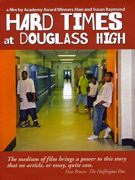 | HARD TIMES AT DOUGLASS HIGH
(2008, 112 min.) is a classic cinema verite documentary that reveals the complex realities of life at the Frederick Douglass High School in West Baltimore as the staff struggles to meet the demands of the "No Child Left Behind" Act. The film examines the daunting challenges faced by many of America’s urban high schools that serve communities living in poverty, suffering from low student test scores, a shortage of qualified teachers … and a 50% dropout rate.
|
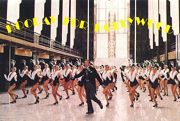 | HOORAY FOR HOLLYWOOD
(1981, 60 min.) is an in-depth look at how movies are made in Hollywood, examining the relationship between art and commerce. Interviews with Ridley Scott directing Blade Runner, Paul Schrader directing Cat People, Martin Scorsese directing King of Comedy and Fred Ross directing Pennies From Heaven.
|
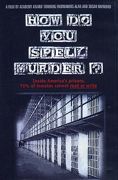 | HOW DO YOU SPELL MURDER?
(2003, 40 min.) chronicles a year in the life of an inmate-run literacy program at the New Jersey State Prison in Trenton, the oldest continuously operating prison in America. Constructed in 1831, it is now a maximum-security prison where half of the prisoners are convicted of murder, the average sentence is 50 years, and 75% of the inmates are illiterate. Yet many of these same men are achieving a measure of hope, a sense of personal freedom: they are finally learning how to read. The film explores the powerful connection between illiteracy and crime.
|
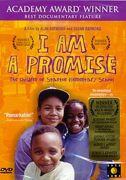 | I AM A PROMISE: The Children of Stanton Elementary School
(1993, 90 min.) is a cinema verite documentary that paints an unflinching portrait of the children of Stanton Elementary School in North Philadelphia, an inner-city neighborhood where 90% of the students live below the poverty line. As seen through the devoted and determined viewpoint of principal Deanna Burney, the film shows Stanton as underfunded, understaffed and filled with children struggling to overcome their difficulties. But for these children, the only hope for their future survives in the success of their education.
|
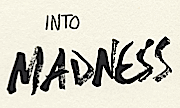 | INTO MADNESS
(1988, 60 min.) profiles three families with schizophrenic children and how each family chooses the best method of caring that they can afford. One is placed in a group home, one is placed in an institution, and one is cared for at home. The documentary was critically acclaimed for its compassionate treatment of mental illness.
|
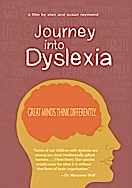 | JOURNEY INTO DYSLEXIA
(2011, 76 min.) profiles dyslexic students and adults who share their experiences of struggling in school and then succeeding in life. Each share their frustration with being misunderstood by teachers and friends and the emotional impact this learning disability had on their lives. Dr. Guinevere Eden, Director of Child Development at Georgetown University, explains the causes of dyslexia. Other experts include Dr. Mary Anne Wolf, author of Proust and the Squid, who describes the difficulty of learning to read for everyone. The journeys into dyslexia are told by students ranging from 2nd grade to college, plus entrepreneur Steve Walker of New England Pellet, inventor Ben Foss of Intel, author Jonathan Mooney, consumer advocate Erin Brockovitch, and Nobel Laureate Dr. Carol Greider.
|
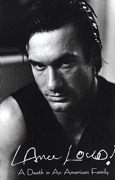 | LANCE LOUD! A Death in an American Family
(2003, 60 min.) In 1973, AN AMERICAN FAMILY, a 12 hour documentary series on PBS, profiled the real life drama of the Loud family. The eldest son, Lance, became the first openly gay man on television and a gay icon for his generation. On December 22, 2001, Lance died from an HIV and hepatitis C co-infection. When he entered the hospice, Lance requested his friends, and the original series filmmakers, Susan and Alan Raymond to return to film the final episode of AN AMERICAN FAMILY. Lance reflects upon his days with Andy Warhol, his band The Mumps, a career as a writer and the experience of being the first reality TV star. This film is a celebration of life and a cautionary tale.
|
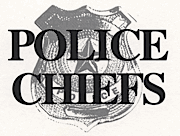 | POLICE CHIEFS
(1989, 60 min.) is a critical look at three of America’s leading law enforcement figures including Los Angeles Chief Darryl Gates, Houston Chief Lee Brown and Minneapolis Chief Anthony Bouza. Each Chief shares their approach to law enforcement and policing big cities.
|
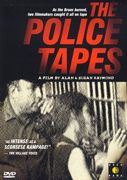 | THE POLICE TAPES
(1977, 90 min.) is a groundbreaking experimental video that reveals the life of a police precinct in the South Bronx during one of the most tumultuous years in the history of New York City. In dramatically raw scenes, the officers of the 44th precinct let the camera in on every secret of society capturing explosive footage of a hostage situation, gangs strutting brazenly down the street, and murders impossible to solve. At the squad station and in the patrol car, cops speak candidly about the role of policing a neighborhood living with constant levels of rage and frustration due to poverty, unemployment, inadequate housing, drugs and street crime. From Hill Street Blues to Cops, the immediate and uncensored style of Alan and Susan Raymond continues to influence a generation of police drama and reality TV shows.
|
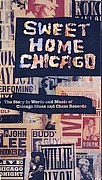 | SWEET HOME CHICAGO
(1991, 64 min.) tells the story of classic American music and features historic footage and interviews with a pantheon of blues legends. Chess Records, the independent company that became the premier home of Chicago blues, captured the sound of the great urban blues artists who converted the music of the Southern Delta into a body of work that still resonates in today's Top 40. Includes performances by Muddy Waters, The Rolling Stones, Buddy Guy, Otis Spann, Willie Dixon, Sonny Boy Williamson, Chuck Berry. Interviews include James Cotton, Buddy Guy, John Lee Hooker, Mick Jagger, Johnnie Johnson, Hubert Sumlin, Koko Taylor, Junior Wells and Phil & Marshall Chess.
|
 | THE THIRD COAST
(1981, 55 min.) is a cinema verite film that profiles the City of Houston, Texas, capturing all of the promise and problems of a city emerging as America’s third most powerful urban center. Using a magazine format, the film explores a visit to one of the largest singles apartment complex, the premiere of Karl Lagerfeld’s collection at Neiman Marcus, Glen McCarthy, independent oil producer, a Jesus Rally at the Houston Astro Dome, Lyndon John Space Center, and rural West Texas.
|
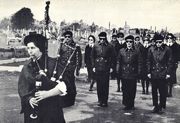 | TO DIE FOR IRELAND
(1980, 60 min.) Belfast, Northern Ireland 1980. After a decade of sectarian conflict, Northern Ireland was a war zone occupied by British soldiers. What began as a civil rights protest in 1969 escalated into an armed struggle between the guerrilla forces of the Irish Republican Army and the British Army. It is a sobering report on a society at war with itself, the victim of nationalistic passions and sectarian hatreds that became a battleground of terrorism and counter-terrorism. The film interweaves scenes of all the factions enmeshed in the conflict: the British Army, the Irish Republican Army as well as Catholic and Protestant citizens.
|
|
|
 |
|
|
|
|
|
|
|
|